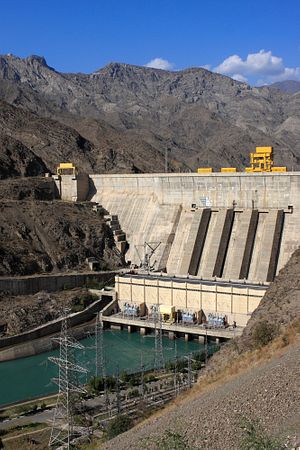Tajik President Emomali Rahmon is traveling to Pakistan on November 12 and 13, making his sixth visit to the country. As reported by Pakistani media, the focus of the visit will be on bilateral cooperation, specifically the CASA-1000 project. CASA-1000 is a scheme to transmit excess electricity from Kyrgyzstan and Tajikistan to Afghanistan and Pakistan, thus providing the former pair with revenue and the latter two with much-needed electricity. Still, there is immense skepticism about the project’s actual potential for success.
CASA-1000 certainly has an impressive list of backers; beyond the four states involved, the World Bank and the Islamic Development Bank have provided the project with serious funds. The American, British, and Australian development agencies (USAID, DFID, AusAID) are also supporting the project. In March 2014, when the World Bank approved $526.5 million in grant and credit financing for the project, it estimated the project to cost upwards of $1 billion in total.
Sri Mulyani Indrawati, the World Bank’s managing director and chief operating officer said at the time that “CASA-1000 is a transformational project that will give a much-needed boost to energy security, improved connectivity and trade across two regions at a critical time.”
But despite the optimism — and money — behind the project, its feasibility remains in question for a host of intertwined environmental and political reasons, not to mention concerns about security in Afghanistan.
Kyrgyzstan and Tajikistan lack the hydrocarbon resources that have made the rest of Central Asia rich by comparison. But both are blessed with mountains and rivers — a perfect recipe for hydropower generation. It’s a complicated blessing, however. First, the scheme is based on the premise that Kyrgyzstan and Tajikistan produce excess electricity in the summertime that can be exported. One of the centerpieces in Kyrgyzstan’s hydropower generation is the Toktogul dam and reservoir, but by fall 2014 the reservoir was only at 60 percent full.
This fall the reservoir is again not full, leading to worries about electricity shortages in the coming winter. But why is the reservoir not full? Less rain and less snowmelt are obvious factors, but the Institute for War & Peace Reporting (IWPR) notes that “some experts believe that the reason why reservoir levels fall in the autumn is not just because of low rainfall.”:
Instead, they suspect that too much water is being let out through the dams over the summer. A healthy flow of water over the growing season benefits farmers in neighboring Uzbekistan, located downstream of Toktogul on the Syr Darya.
There are suspicions that hydroelectric station managers receive payment in return for opening the sluices in summer.
In a 2014 book on social-ecological resilience and law, the authors of a chapter on institutional cooperation noted that in the past Kyrgyzstan and Tajikistan have foregone winter releases — thus not using the water in their reservoirs for electricity during winter — in order to provide downstream countries with more reliable summer releases, necessary for their agricultural endeavors. In return, Uzbekistan, for example, provides Kyrgyzstan with electricity and gas during the winter (as does Kazakhstan). But the system isn’t perfect — last year a dispute between Tashkent and Bishkek saw Uzbekistan cut gas supplies to Kyrgyzstan for nearly nine months, including half the winter.
Water in Central Asia is not just a vital natural resource but a political tool. CASA-1000 adds an additional layer of demands onto a convoluted system of relationships.
Project information stresses that CASA-1000 “will have no direct impact on the winter energy deficits” that plague both Kyrgyzstan and Tajikistan and instead will help generate revenue that can be used to mitigate winter shortages. This is not an unreasonable idea, but the project surmises that “[a]s these countries develop additional generation capacity to meet their winter demand, they will generate additional summer surpluses [of electricity].” Part of creating additional generation capacity would necessitate more dams, which downstream countries are none too happy about. Tajikistan, in particular, is banking on the massive Rogun dam project — which Uzbekistan has declared it will never support — to generate additional electricity and thus revenue.
CASA-1000 is built on a reasonable premise in some ways, but the interconnected layers of environmental and political concerns seem likely to hamstring the scheme before it ever comes to fruition.
































